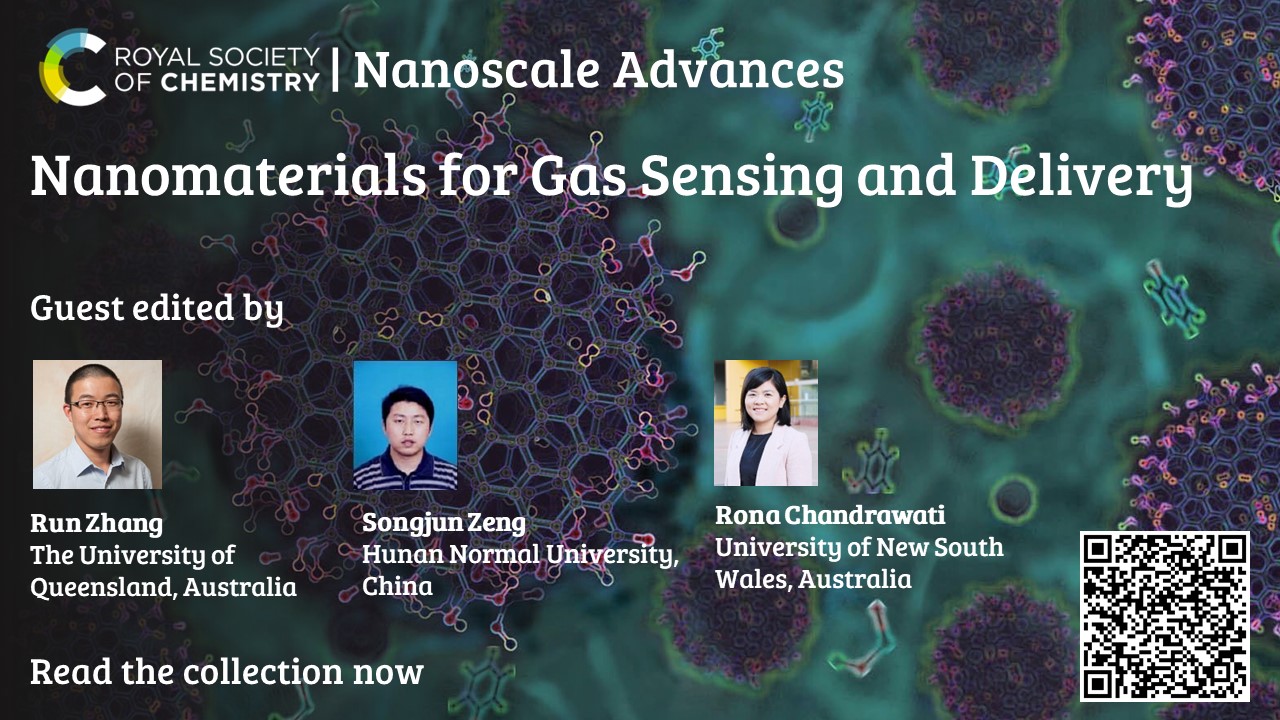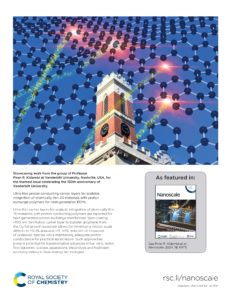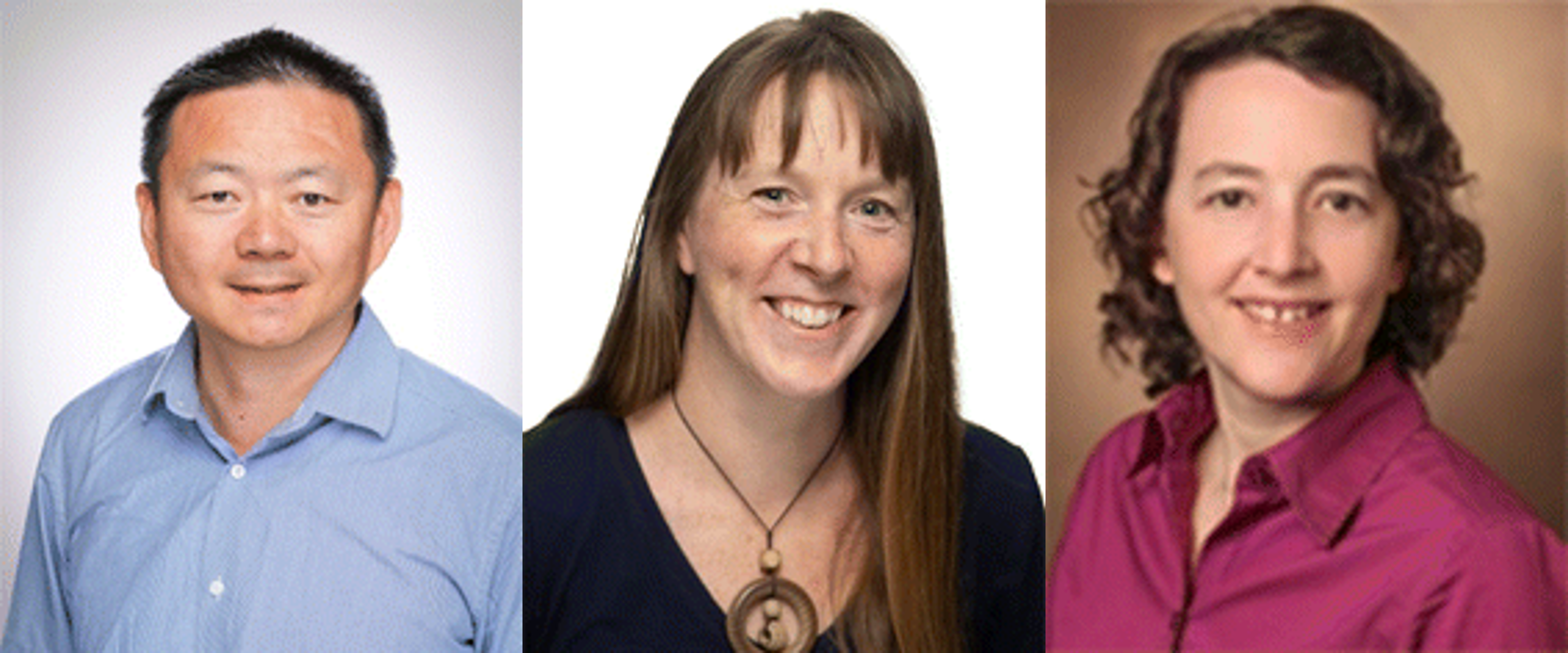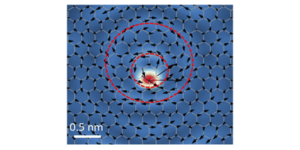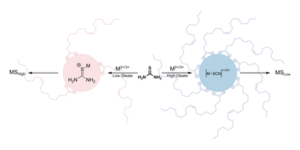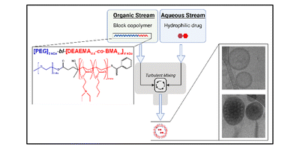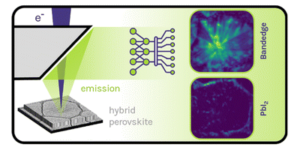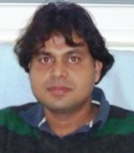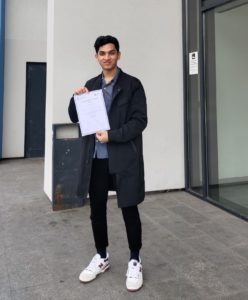Read the collection in Nanoscale Advances
We are delighted to introduce our new themed collection focusing on nanomaterials for gas sensing and delivery!
Guest Edited by Dr Run Zhang (The University of Queensland, Australia) Dr Songjun Zeng (Hunan Normal University, China) and Associate Professor Rona Chandrawati (University of New South Wales, Australia)
This themed collection in Nanoscale Advances aims to provide a forum for recent trends in the rapidly evolving field of nanomaterials for gas sensing and delivery.
A small selection of the papers are featured below, all open access.
Graphene-based chemiresistive gas sensors
Patrick Recum and Thomas Hirsch
Nanoscale Adv., 2024, 6, 11-31. DOI: 10.1039/D3NA00423F
Embedding Pd into SnO2 drastically enhances gas sensing
Katarzyna Jabłczyńska, Alexander Gogos, Christian M. P. Kubsch and Sotiris E. Pratsinis
Nanoscale Adv., 2024, 6, 1259-1268. DOI: 10.1039/ D3NA00558E
Role of graphene quantum dots with discrete band gaps on SnO2 nanodomes for NO2 gas sensors with an ultralow detection limit
Jinho Lee, Minsu Park, Young Geun Song, Donghwi Cho, Kwangjae Lee, Young-Seok Shim and Seokwoo Jeon
Nanoscale Adv., 2023, 5, 2767-2775. DOI: 10.1039/D2NA00925K
We hope you enjoy reading this themed collection!
Did you know?
At Nanoscale Advances, our themed collections are built by collaboration between our Guest Editors and expert Associate Editors. Our Guest Editors guide the scope and curate the contributions in our collections but all submissions are handled through peer review by our team of resident Associate Editors. This means that as an author you receive a consistent experience, and as a reader you can trust the quality of the science being presented.
If you have an idea for a topical collection in your research field, we’d love to hear from you! Get in touch here.


